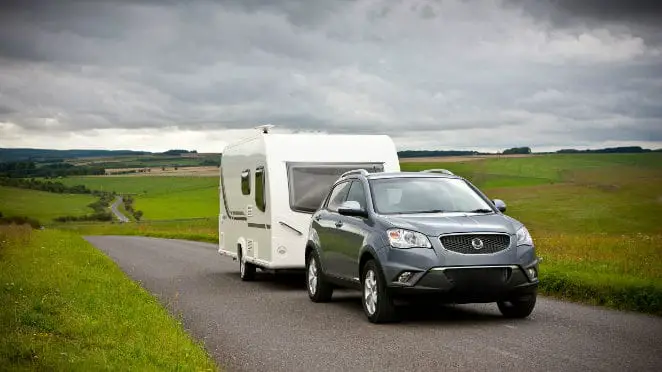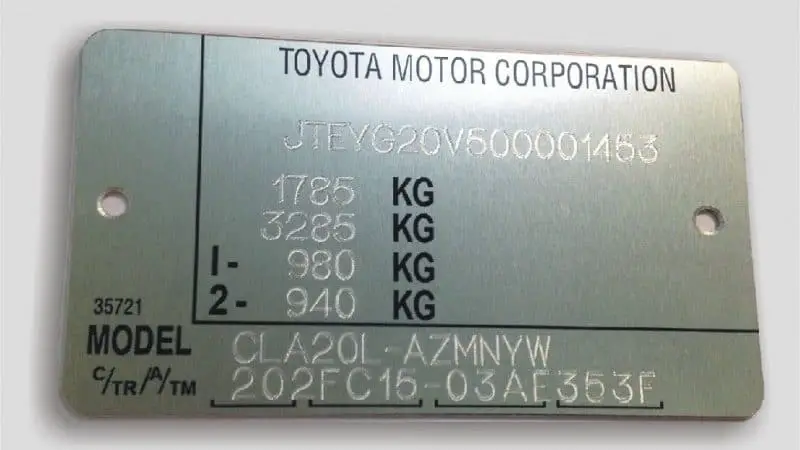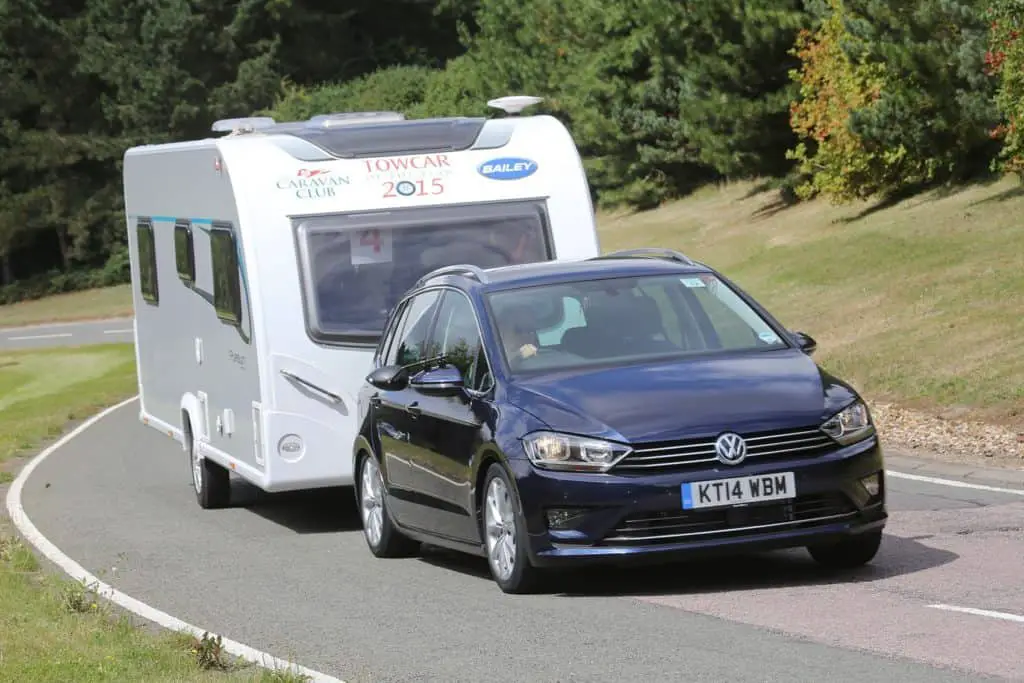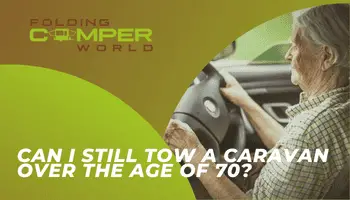Since caravanning is such a popular leisure activity for many people in the UK, people often assume that you need a different licence to be able to tow a caravan. It may seem that way, as towing another vehicle seems like quite a big responsibility that not everyone would be able to do. However, this is not the case. There are no separate licences needed to be able to tow a caravan. That being said, you may have to apply for a different category of licence if you want to tow a caravan that is heavier than the weight allowed on the standard licence.
With your B category driving licence, you can tow trailers up to a certain weight. The weight you’re allowed to tow depends on when you got your licence. This will be explained in more detail further in this blog post. To determine how much weight you can tow, you’ll need to know the weight of both the vehicle and trailer. This is known as the maximum authorised mass (MAM). You should be able to find the MAM in the owner’s manual, which is usually shown on a plate or sticker fitted to the vehicle.
This blog post will cover the following:
- Towing with a standard licence
- Checking your maximum capacity
- Different licence categories
- Towing heavier weights
Towing with a standard licence

It is always good to understand your driving licence rules and what you are entitled to. This will ensure you don’t accidentally do something that you’re not legally permitted to do with your licence. The standard UK driving licence allows most people to tow a caravan or drive a motorhome. There are a few exceptions. For example, if you are reaching 70, want to drive a motorhome heavier than 3,500kg. In this case, you would have to apply for a different licence category.
The law on towing has recently changed in the UK. As of 16 December 2021, if you passed your driving test on or after 1 January 1997, you’re now allowed to tow trailers up to 3,500kg MAM. You should check your car’s handbook to determine its gross train weight before towing a caravan.
Checking your maximum capacity

The towing capacity is the maximum weight a car can tow legally. However, most of the time, even the towing capacity that is legally allowed may not be safe or comfortable, especially with a box-shaped caravan, as it can make your towing car feel unstable. The towing capacity of your car can be found in the handbook. If you don’t have the handbook, it can also be calculated from the vehicle identification number (VIN) plate, as displayed in the image above. This can be found stamped into the body of a vehicle, usually found in the engine bay or beneath the plastic trim around the driver or passenger door opening. To calculate the towing capacity from your VIN plate, you need to take the first line (which is the maximum allowable mass weight) away from the second line (which is the maximum train mass). The figure you are left with is the towing capacity of your car.
In addition to following the towing capacity guidelines, some towing experts also suggest that you keep the fully laden weight of your caravan at 85% of the kerbweight of the tow car rather than 100%. The kerbweight can be found in the owner’s manual, on a plate on the door sill or sometimes on the V5 registration document. Although the 85% rule isn’t a legal requirement, it is still good practice to follow as it will ensure that both your car and your caravan remain stable on the road.
To calculate whether your car can safely tow your caravan, you need the kerbweight of your car and the maximum technically permissible laden mass (MTPLM) of your caravan. If the mass of the caravan is 85% or less of the car’s kerbweight, you can very easily tow your caravan, even if you’re new to towing. If it’s between 85% and 100%, it would be best if only experienced caravanners use this car to tow the caravan. If the caravan is heavier than the car, then it is strongly recommended not to use this car to tow the caravan as it can result in issues while driving.
Different licence categories

In the UK, different categories of driving licences determine which vehicles you can tow and what their weights should be. Most people who have a driving licence for a car are likely to have the B category licence or the BE category licence. The difference between them both is that with a category B licence, you can tow heavier trailers if the total MAM (maximum authorised mass) of the vehicle and trailer is not more than 3,500kg. With a category BE licence, the size of the trailer depends on when you got your driving licence. It’s also important to note that if your licence was issued before 19 January 2013, you can tow any size caravan within the towing limits of your vehicle, but if it was issued on or after 19 January 2013, you can tow a caravan with a MAM of up to 3,500kg within the towing limits of your vehicle.
The table below displays each driving licence category for cars, medium vehicles and large vehicles to see what each one entails. Please note that this information has been taken from Gov.UK and is accurate at the time of writing.
| Category | Rules |
|---|---|
| B1 | You can drive motor vehicles with four wheels up to 400kg unladen or 550kg if designed to carry goods. |
| B (passed before 1 January 1997) | You’re usually allowed to drive a vehicle and trailer combination up to 8,250kg MAM. View your driving licence information to check. You’re also allowed to drive a minibus with a trailer over 750kg MAM. |
| B (passed on or after 1 January 1997) | You can drive vehicles up to 3,500kg MAM with up to 8 passenger seats (with a trailer up to 750kg). You can also tow heavier trailers if the total MAM of the vehicle and trailer is not more than 3,500kg. |
| B auto | You can drive a category B vehicle – but only an automatic one. |
| BE | You can drive a vehicle with a MAM of 3,500kg with a trailer. The size of the trailer depends on the BE’ valid from’ date shown on your licence. If the date is: – before 19 January 2013, you can tow any size trailer within the towing limits of the vehicle – on or after 19 January 2013, you can tow a trailer with a MAM of up to 3,500kg within the towing limits of the vehicle |
| C1 | You can drive vehicles between 3,500 and 7,500kg MAM (with a trailer up to 750kg). |
| C1E | You can drive C1 category vehicles with a trailer over 750kg. The combined MAM of both cannot exceed 12,000kg. |
| C | You can drive vehicles over 3,500kg (with a trailer up to 750kg MAM). |
| CE | You can drive category C vehicles with a trailer over 750kg. |
Towing heavier weights

Although a different licence is not required to tow a caravan, there may be a rare case when you have a caravan that exceeds the 3,500kg weight limit, or you may find that you want to drive a motorhome that weighs more than this. If this is the case, then the B or BE category licence won’t allow you to do this. I used the Practical Caravan online forum and asked caravan users what you need to do if you want to tow something heavier than what is allowed on your licence category. The responses I got on this post explained that you cannot tow heavier vehicles with a category B or BE licence; however, you can apply for a category C1 or C1E licence, which allows you to drive and tow more weight. Please refer to the table above for more information on these licence categories.
Applying for a C1 or a C1E licence category is a straightforward process. Follow the steps below to be allowed to legally drive vehicles and trailers with a combined weight of up to 12,000kg MAM:


